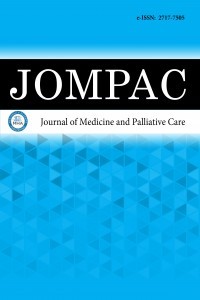1.
Tielleman T, Bujanda D, Cryer B. Epidemiology and risk factorsfor upper gastrointestinal bleeding. Gastrointest Endosc Clin NAm. 2015;25(3):415-428.
2.
Nable JV, Graham AC. Gastrointestinal bleeding. Emerg Med ClinNorth Am. 2016;34(2):309-325.
3.
Wilkins T, Khan N, Nabh A, Schade RR. Diagnosis andmanagement of upper gastrointestinal bleeding. Am FamPhysician. 2012;85(5):469-476.
4.
Kiringa SK, Quinlan J, Ocama P, Mutyaba I, Kagimu M.Prevalence, short term outcome and factors associated withsurvival in patients suffering from upper gastrointestinal bleedingin a resource limited-setting, the case of Mulago hospital inKampala, Uganda. Afr Health Sci. 2020;20(1):426-436.
5.
Nahon S, Hagège H, Latrive JP, et al. Epidemiological andprognostic factors involved in upper gastrointestinal bleeding:results of a French prospective multicenter study. Endoscopy.2012;44(11):998-1008.
6.
Tomizawa M, Shinozaki F, Hasegawa R, et al. Patientcharacteristics with high or low blood urea nitrogen inupper gastrointestinal bleeding. World J Gastroenterol.2015;21(24):7500-7505.
7.
Chopra D, Rosenberg M, Moayyedi P, Narula N. Is Blood ureaconcentration an independent predictor of positive endoscopicfindings in presumed upper gastrointestinal bleeding?. Dig Dis.2020;38(1):77-84.
8.
Ernst AA, Haynes ML, Nick TG, Weiss SJ. Usefulness of theblood urea nitrogen/creatinine ratio in gastrointestinal bleeding.Am J Emerg Med. 1999;17(1):70-72.
9.
Urashima M, Toyoda S, Nakano T, et al. BUN/Cr ratio as anindex of gastrointestinal bleeding mass in children. J PediatrGastroenterol Nutr. 1992;15(1):89-92.
10.
Samuel R, Bilal M, Tayyem O, Guturu P. Evaluation andmanagement of Non-variceal upper gastrointestinal bleeding. DisMon. 2018;64(7):333-343.
11.
Falcão D, Alves da Silva J, Pereira Guedes T, Garrido M, NovoI, Pedroto I. The current portrayal of non-variceal uppergastrointestinal bleeding in a Portuguese Tertiary Center. GE PortJ Gastroenterol. 2021;28(6):392-397.
12.
Tomizawa M, Shinozaki F, Hasegawa R, et al. Low hemoglobinlevels are associated with upper gastrointestinal bleeding. BiomedRep. 2016;5(3):349-352.
13.
Hearnshaw SA, Logan RF, Palmer KR, Card TR, Travis SP,Murphy MF. Outcomes following early red blood cell transfusionin acute upper gastrointestinal bleeding. Aliment Pharmacol Ther.2010;32(2):215-224.
14.
Sasaki Y, Abe T, Kawamura N, et al. Prediction of the need foremergency endoscopic treatment for upper gastrointestinalbleeding and new score model: a retrospective study. BMCGastroenterol. 2022;22(1):337.
15.
Shung DL, Au B, Taylor RA, et al. Validation of a machine learningmodel that outperforms clinical risk scoring systems for uppergastrointestinal bleeding. Gastroenterology. 2020;158(1):160-167.
16.
Marmo R, Koch M, Cipolletta L, et al. Predictive factors ofmortality from nonvariceal upper gastrointestinal hemorrhage:a multicenter study. Am J Gastroenterol. 2008;103(7):1639-1648.
17.
Alali AA, Barkun AN. An update on the management of non-variceal upper gastrointestinal bleeding. Gastroenterol Rep (Oxf).2023;11:goad011.
18.
de Groot NL, van Oijen MG, Kessels K, et al. Reassessment ofthe predictive value of the Forrest classification for peptic ulcerrebleeding and mortality: can classification be simplified?Endoscopy. 2014; 46 (01): 46-52.
19.
Kim JS, Kim BW, Kim DH, et al. Guidelines for nonvariceal uppergastrointestinal bleeding. Gut Liver. 2020;14(5):560-570.
20.
Gralnek IM, Stanley AJ, Morris AJ, et al. Endoscopic diagnosisand management of nonvariceal upper gastrointestinalhemorrhage (NVUGIH): European Society of GastrointestinalEndoscopy (ESGE) Guideline - Update 2021. Endoscopy. 2021;53(03):300-332.

